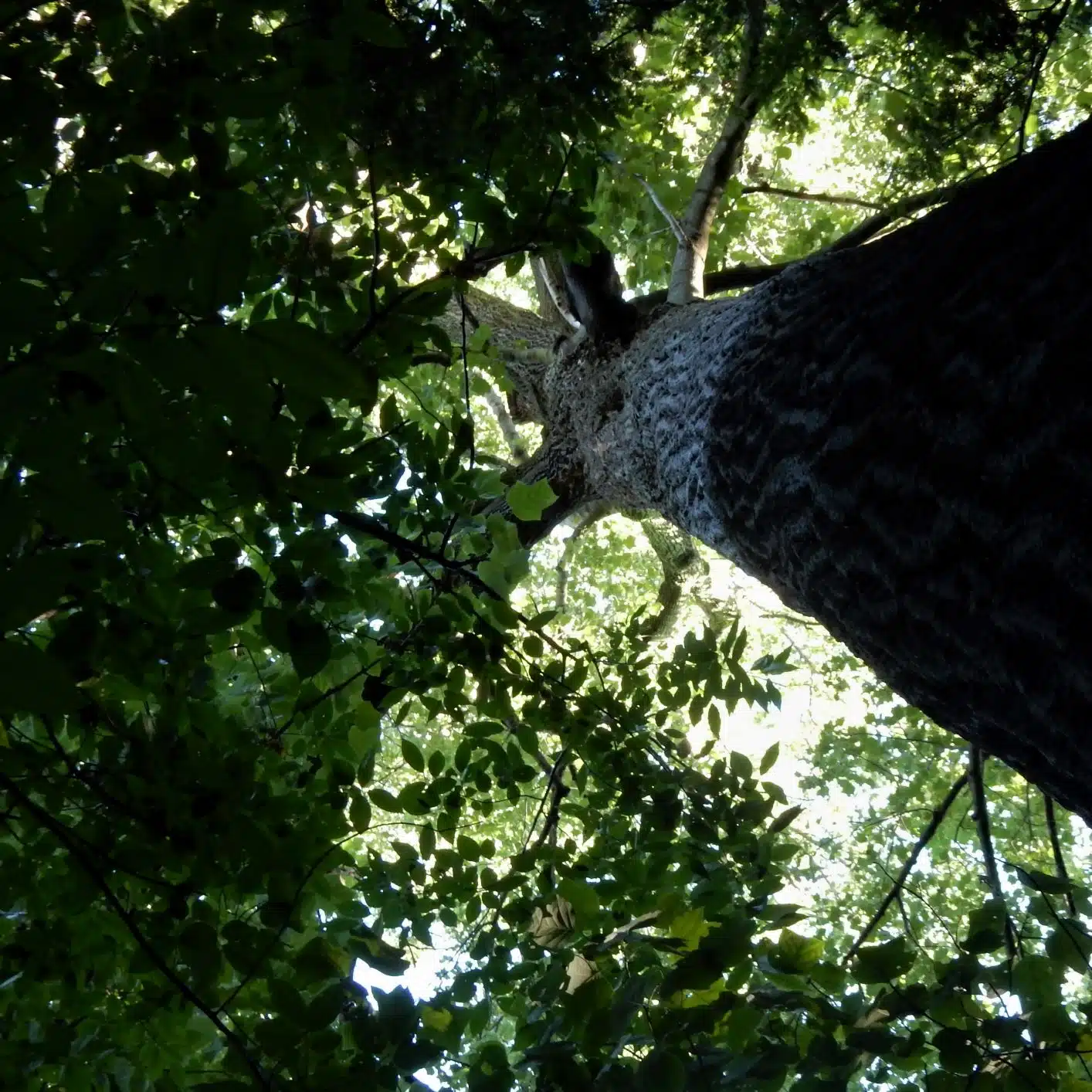Trees
Tuliptree
Liriodendron tulipifera


I love seeing the new leaves of Liriodendron as they unfurl in late April, the flowers as they bloom in late May and June, and the golden yellow leaves as they fall in November. Groves of tuliptrees are magical places to be.
In the natural areas of The Holden Arboretum, Liriodendrontulipifera is the third most common species next to sugar maple and American beech. It is found in all our forest types and is especially prevalent in old fields abandoned last century. Their trunks tend to be straight. One old tree in Bole Woods measures 4’ in diameter at breast height (DBH) and although a bit stag-headed, is 135’ tall.
In the gardens our largest specimen is at Lantern Court near the east terrace just off the circle. It was planted in the early 1930s and now measures 98’ tall, 60’ wide and 32” DBH. In the lawn just north of the Myrtle S. Holden Wildflower Garden’s woodland section is a specimen that has low branches for easier viewing. It was a 5’-6’ tall native sapling planted in 1962 that lost its leader, developed a double trunk at 15’ and now measures 72’ x 44’, 27” DBH. Birds such as cardinals frequently perch high in its branches to sing and many others including warblers may be seen flitting about looking for insects in its crown. Purple finches eat the seed that ripens in late October. The seed is shed from November through the winter months, primarily on sunny dry days.
One distinctive cultivar of tuliptree is a narrowly upright selection named ‘Fastigiatum’ that was planted July 12, 1995 in the Display Garden as a grafted 10’ balled and burlapped specimen. It now measures 34’ x 19’, 7.6” DBH. As with the species, the bloom provides nectar and pollen for beetles, honeybees and numerous native insects but they can easily be overlooked from a distance, and are of particular interest only when borne low enough for close inspection. Flowering usually lasts between three to five weeks with the record being from May 23 through June 30 in 2003. A cultivar with yellow marginally variegated leaves named ‘Aureomarginatum’ was planted in the Holly Collection in October 1970. This low-branched specimen now measures 42’ x 41’ with a diameter of 19.7” at 2’. The leaf variegation is more prominent in spring, and fades to a yellowish-green.
The attractive leaves of mature trees are about 4” long and wide, but can be as much as 8” on young fast growing trees. Insects rarely feed on the foliage, with notable exceptions of tiger swallowtail butterfly and Promethea silkmoth larvae. In the woods they provide the last spectacular display of fall color in November with a number of trees also turning color in late October. Trees in our gardens often defoliate significantly during summer dry spells. In cultivation they may also suffer from infestations of tuliptree scale insects and aphids that exude sticky “honey-dew” that sooty mold grows on, marring the foliage and all surfaces below.
Tuliptrees can be difficult to transplant due to their rather coarse fleshy roots, and are best planted in small sizes in spring. They resent cultivation around their roots, soil compaction, pollution, salt, drought and waterlogged soil. White-tailed deer favor this species as browse. At Holden the mortality rate has been about 80 percent. Around healthy tuliptrees it can be a challenge to grow companion plants such as rhododendrons as the root system so aggressively competes for water.
Liriodendron tulipifera is one of our most majestic eastern North American natives with the tallest being 178’ in western North Carolina. Being in the magnolia family it is one of the most ancient flowering trees as the genus dates back about 65 million years. Although called tuliptree by horticulturists, it is also referred to as tulip-poplar, yellow-poplar and whitewood. Known as Ko-yen-ta-ka-ah-tas (the white tree) by the Onondaga, its scientific name was assigned by Linnaeus (tulip-bearing lily-white tree). It is the state tree of Indiana, Kentucky and Tennessee. Our species has an endangered counterpart in China, Liriodendron chinense.
In 1999 Holden Chief Horticulturist Charles Tubesing obtained pollen from Chinese tuliptrees originating from Huang Shan and Lu Shan in Anhui and Jiangxi Provinces and made crosses with our natives on the edges of fields in Holden’s Baldwin property. The seedlings were container grown and planted in late June 2002 when they were 5’-6’ tall. There has been no mortality. The 17 hybrids now in our collection average 25’ in height, 6 being 30’ or more. Five of the trees flowered in 2009. The flowers on the trees south of the Cooper Building parking lot were more orange than green and more diminutive than those of their seed parent. The tallest of these 10 year olds is in an old pasture at Lantern Court measuring 38’ x 17’, 6.8” DBH and has borne about 20 fruit in 2009. The new leaves of these hybrids often have a purplish blush just like their pollen parent.
Light: Full Sun
Site Selection: Open Spaces (Parks/ Lawns)
Size: Large
Tolerances: Clay Soils
Value: Fall Color, Flower, Native to Eastern North America, Pollinator Friendly




